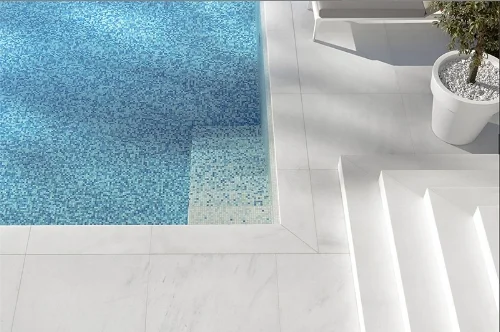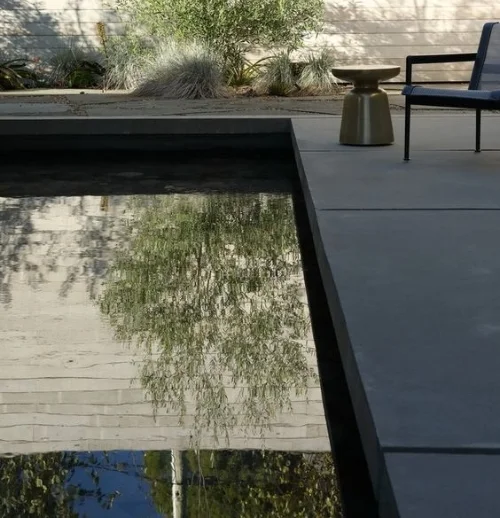Pool Design - Surrounds, Part #2
In Pool Design - Surrounds, Part #1, we talked about decking as a surface option for pool surrounds that best suit the Queensland environment. Now we are going to take a look at how far paving has come.
Remember the summers of your childhood spent playing around the pool, probably running when you were repeatedly told not to? Then stubbing your toe on a buckled brick paver? Remember doing the 'hot foot shuffle', precariously balancing on the sides of your feet, or tip toes, as you made your way from the pool to cooler ground?
Yep, so do we.
Ah, yes. Fond Summer memories of scorched feet and stubbed toes.
The incidence of buckled brick pavers are few and far between as larger pavers are more often used in contemporary pool and landscape design. A hard surface base will prevent warping and buckling as it stands up to excessive splashing. Ideally this hard surface base will be a concrete slab that's been tied into the pool shell.
Light pavers reflect the intense glare of the QLD sun.
Choice of paver colour may depend on where you live. Here in Queensland, the sun is hotter and has more glare. While dark pavers and light pavers look amazing in glossy lifestyle magazines, those pavers are much better suited to cooler climates.
Dark pavers absorb, and hold, the heat.
Where dark pavers absorb the heat and can potentially cause burns under foot, light pavers can reflect glare into our vision and also straight back up our bodies causing sunburn where we'd least expect it.
A smart choice of paver colour in Queensland will be something in between light and dark. An initial consultation with your Landscape Architect will assist you with making good choices before the pavers are in place.
Images: 1 www.handyman.net.au, 2 Pixelmari, 3 Ema Peter @ ArchDaily



